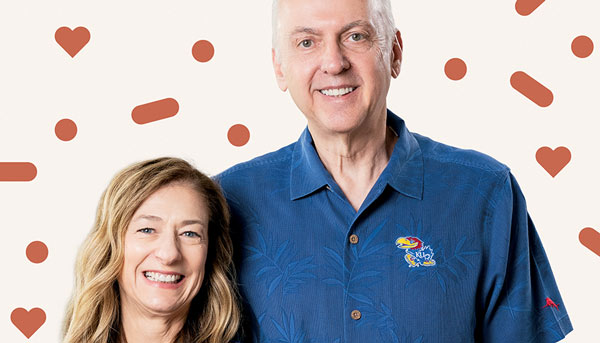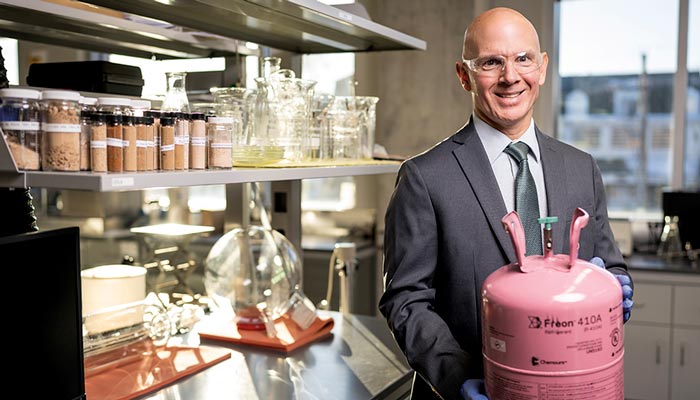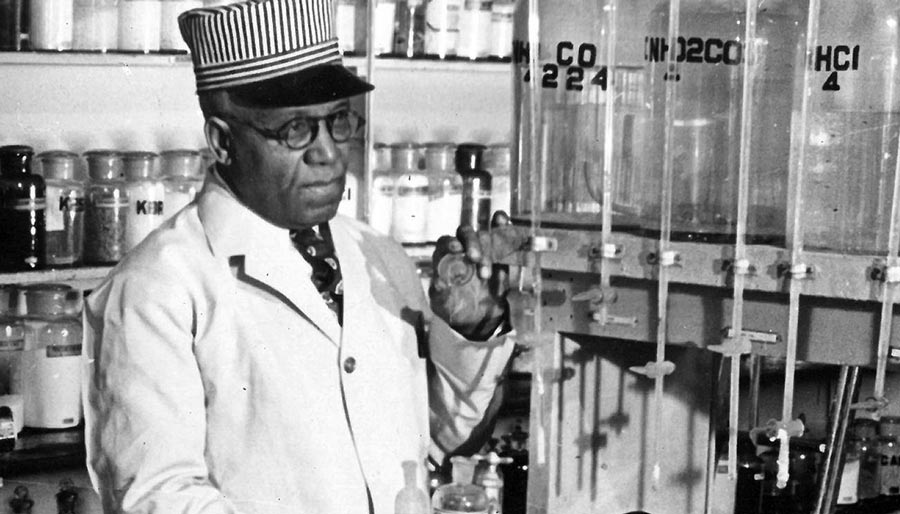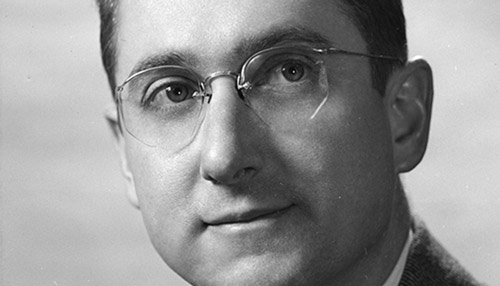Catch the wave: How AI can power drug discovery
Issue 2, 2024

The current apprehension over artificial intelligence perhaps began Feb. 16, 2023, when the vague concept of “AI” suddenly became real—and real creepy—in the wake of New York Times technology columnist Kevin Roose reporting on the unsettling “conversation” he’d had with the AI-powered Bing search engine.
Merely one week earlier, Roose had giddily shared with his readers and podcast audiences his first impressions of the new tech tool, created by OpenAI, developer of the now wildly popular ChatGPT, equating it to the “similar sense of awe” he gained from his first encounter with Google’s search engine, back when he was a “nerdy, internet-obsessed preteen.” The following week, however, Roose, noodling around in his home office as his wife prepared dinner, engaged Bing’s “chat feature” in an extended exchange, during which the AI persona—which had dubbed itself Sydney—expressed its love for him and even urged Roose to admit he was stuck in a loveless marriage.
Cue the hysteria.
“The era of Artificial Intelligence is here,” internet pioneer Marc Andreessen wrote June 6, “and boy are people freaking out.” As we saw play out in real time, Roose’s Sydney encounter stoked fears evoking a high-tech, 21st-century version of Japanese artist Hokusai’s 19th-century woodblock print The Great Wave off Kanagawa, in which humanity—represented as oarsmen in three small boats—is helplessly trapped by the whims of towering seas. On we row, pulling hard against the foaming ocean despite our inevitable demise under a wave beyond our control.

Thankfully, however, the AI hysteria also sparked a general awareness of—and placid discussions about—the plus-side potential of this amorphous tsunami called artificial intelligence. It was during one such what-if conversation that one of KU’s foremost futurists, in the setting of an off-the-record meeting with Kansas Alumni, hesitated for narrowly more than a nanosecond when asked to identify immediate societal benefits that he expected would arise from the otherwise flirtatious super-brains: “Pharmaceutical discovery and drug development,” the tech savant said, predicting that a sliver of the research world would be on top of the technology from the start and would make rapid gains, while everyone else would spend decades catching up.
When Kansas Alumni shared this anecdote with Michael Wolfe, Mathias P. Mertes Professor of Medicinal Chemistry and primary investigator on KU’s “Big Data for Drug Discovery” Research Rising project, Wolfe replied, “He’s an expert on AI, and of all the things that he could have picked, he picked pharmaceuticals?”
As he settled into the idea, Wolfe needed no prompting to offer his agreement and to explain why his KU research group will use the un-creepy aspects of artificial intelligence and machine learning to tackle plagues such as brain tumors and Alzheimer’s disease.
“We have the ability to do the kind of science that involves generating oceans of data, really, and there’s no way that we can—just ourselves, with our eyeballs and our single brains—look at this data and make sense of it,” Wolfe said. “You need computers to analyze all this data, and that involves machine learning, which is a kind of artificial intelligence.
“So what we want to do is use the data to advance drug discovery at a variety of levels, but mostly at a basic science level.”
Two years before modern AI’s unsettling public debut, the KU Office of Research on Sept. 8, 2021, issued a call for white papers that launched Research Rising, a campus research competition and stimulus package, funded by KU Endowment, that would seed each of four research groups with $3 million over five years.
Proposed projects, the announcement specified, should address “major questions pertinent to the critical challenges facing humanity” and must demonstrate a “high probability of building a team able to compete successfully for federal research funding.” Although all high-quality proposals would be considered, the announcement also stated a priority for topics in the five areas of research excellence highlighted in KU’s Jayhawks Rising strategic plan:
- Development across the life span
- Earth, energy and environment
- Human experience in the digital age
- Molecules and medicine
- Security and safety
With hopes of expanding his federally funded research portfolio, Mike Wolfe at the time was already picking the brains of two of his most revered colleagues: Susan M. Lunte, Ralph N. Adams Distinguished Professor of Chemistry and Pharmaceutical Chemistry, director of the Adams Institute for Bioanalytical Chemistry, and director and principal investigator (PI) of the Center for Molecular Analysis of Disease Pathways; and P. Scott Hefty, professor and chair of molecular biosciences and director and PI of the Center for Chemical Biology of Infectious Disease.
Both Lunte and Hefty’s research centers receive critical federal funds from Centers of Biomedical Research Excellence (COBRE). COBRE is part of the Institutional Development Award (IDeA) program, established by a 1993 congressional mandate. Housed in the National Institute of General Medical Sciences, which is part of the National Institutes of Health, IDeA aims to assist researchers in 23 states and Puerto Rico, where federal science funding is typically less than on the coasts and in the upper Midwest. COBRE supports biomedical and behavioral research centers through three sequential five-year phases, and emphasizes opportunity for early-career researchers.
COBRE regulations cap both the length of each funded program at 15 years, including two renewals of the initial five-year award, and the number of current programs at a given institution. KU had reached its limit of four COBRE research projects, but because Lunte’s program was already in its third five-year segment, the search was on for an outstanding application to replace it.
“Initially Mike was looking at putting together a COBRE grant, and so Scott and I were giving him some advice on how to put one forward,” Lunte says. “Since ours was grandfathering out, his is a good replacement with a different angle.”

Wolfe recalls that when he first heard Research Rising announced in 2021, he had yet to formulate ideas about using “big data”—a combination of artificial intelligence technology and its related computational field, machine learning—to develop drug molecules. His expertise is in medicinal chemistry, not advanced computing, but as he began to learn about big data’s applications being used in private industry, a plan soon came together.
“This idea of using technology, artificial intelligence, for drug discovery is quite a new thing—a very new thing,” Wolfe says. “I can’t find anybody that’s actually doing this in academia right now, in terms of using big data to actually develop drug molecules. There are people who are doing this for identifying targets, pathways, but trying to use it to actually develop drug molecules? That’s still very early days, and we’re ahead of the curve here.”
As recounted in these pages in issue No. 3, 2022, by Mindie Paget, c’99, g’01, director of external affairs in the KU Office of Research, Wolfe, g’87, PhD’91, lost his father more than a decade ago to Alzheimer’s disease. Wolfe in summer 2022 had just learned that his was one of four proposals chosen for Research Rising, and he was already looking forward to a day—hopefully fast approaching—when its computing power could help end such scourges as metastatic cancer, malaria and complicated neurological disorders that have so far confounded researchers.
“I felt helpless as my father withered and died from Alzheimer’s disease,” Wolfe said in his Research Rising video presentation. “He’s been gone for over 10 years, and there are still no effective agents for this terrible illness.”
Wolfe grew up in northern New Jersey, near Philadelphia, and “naively reasoned” that in order to pursue his interest in pharmacology—the chemistry and biology of drug action—he should first get a degree in pharmacy. He realized his error shortly after entering the Philadelphia College of Pharmacy & Science and switched his major to chemistry. Wolfe earned his medicinal chemistry master’s and doctoral degrees at KU, where his mentor was Distinguished Professor Emeritus of Pharmaceutical Chemistry Ron Borchardt, PhD’70.
After earning his PhD, Wolfe first joined the University of Tennessee in Memphis, followed in 1999 by a move to Harvard Medical School and Brigham and Women’s Hospital, where in 2008 he became professor of neurology while researching Alzheimer’s and related disorders.
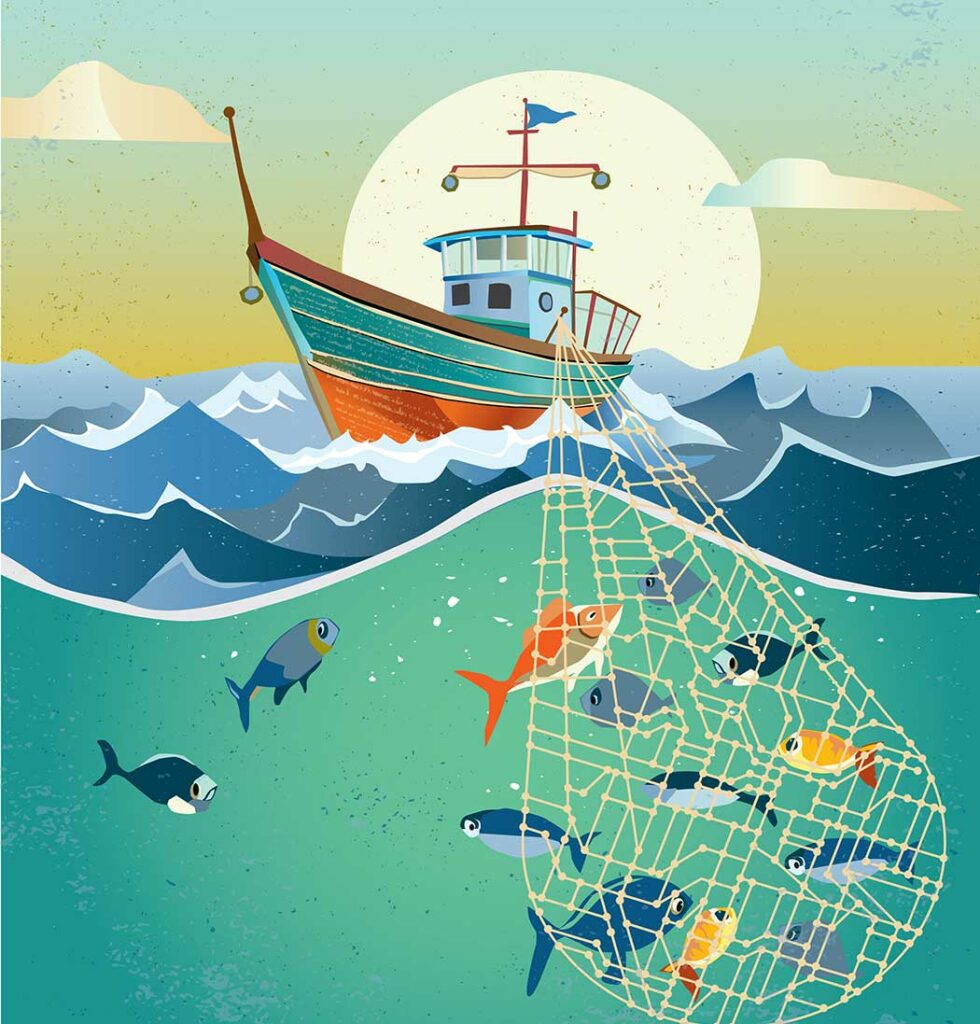
Wolfe in 2016 returned to KU, where, via Borchardt, his academic lineage traces to titans in KU’s distinguished history of pharmaceutical research and drug discovery, including, among many others, professor and chair of medicinal chemistry Edward Smissman, who came to KU from the University of Wisconsin in 1960; University Distinguished Professor of Pharmacy and Chemistry Takeru Higuchi, who joined KU in 1967 after 20 years at Wisconsin; and, more recently, University Distinguished Professor Emeritus Valentino Stella, PhD’71, inventor or co-creator of six approved drugs—fighting such diseases as blood cancer, epilepsy and HIV—with yet another now entering clinical trials. With Research Professor Roger Rajewski, c’84, g’87, PhD’90, Stella also co-invented Captisol, now in more than a dozen FDA-approved products.
“KU has a long history and reputation for excellence in biomedical sciences, and that includes drug discovery, and we’re expanding that,” Wolfe says. “There were people back in the ’60s and ’70s who had this vision about doing rational drug design, using computers, to study the structure of proteins and designing molecules; that was cutting-edge stuff back in those days. KU established a strong reputation for excellence in this area, and we can do that again, now, in this new area. I think KU is the perfect place to do this. We’re playing into our strengths.
“We’re building on our reputation for excellence in the biomedical sciences and drug discovery, and we’re leveraging our existing resources here on campus. We have the ability to do it; we just need to coordinate it, focus it, in this way.”
Wolfe’s stated goal for “Big Data for Drug Discovery” is to “integrate cutting-edge biotechnologies that collect large amounts of data in order to create a more holistic understanding of human diseases and empower the discovery of new drugs to treat them.”
Along with Lunte and Hefty, he is joined by colleagues in molecular biosciences, pharmacy, chemistry, electrical engineering and computer science, and from several departments at KU Medical Center, along with four new faculty hires, two of whom are already on campus: assistant professors of medicinal chemistry Iredia Iyamu, most recently at Purdue University, and Luke Erber, who earned his PhD and did postdoctoral work at the University of Minnesota.
The big data soon to be unleashed by such real-world intelligence is massively complex in detail, yet elegantly simple in thumbnail description: Deploying technology such as high-throughput screening and mass spectrometers—among other time-tested laboratory techniques—the researchers will create massive data sets, libraries of information far beyond the limits of human comprehension, to be fed into huge computers capable of machine learning. (In a nutshell, machine learning relies on specific, predetermined sets of data, with the aim of producing reliable analysis, while ChatGPT-style large language AI digests all known data sources in the world, with potentially unreliable results—a cycle that will only degrade as massive amounts of AI-generated information are added to its intake.)

The process can be compared with naturalists hunting for topographic features conducive to locating a rare jungle critter. Rather than launching themselves blindly into the Amazon, they’ll now begin by consulting Google Earth.
“When you analyze the pixels, perhaps you can tell that trees in one image might conceal a little mountain and in another they might conceal a river,” Sue Lunte explains. “If you know what you’re looking for, you now have a destination in mind.”
After crunching data culled from, say, samples of both healthy and cancer-
compromised tissue, the computer, instead of looking for changes in a single protein, can instead analyze all the proteins in a specific cell model—a chore that Wolfe says is “just too much information for the human mind to wrap around.” Once the biological analysis is completed, it then becomes the scientists’ job to sift through the data to find promising areas of investigation.
“It’s kind of like the difference between fishing with a fishing rod and casting a wide net,” Wolfe says. “The typical drug discovery for the last 50-odd years has been more like the fishing rod: You have a certain piece of bait, you’re trying to catch a specific kind of fish, and you catch them one at a time. The net allows you to bring in all this stuff all at once, and then you can sift through it and find the things that will be helpful.”
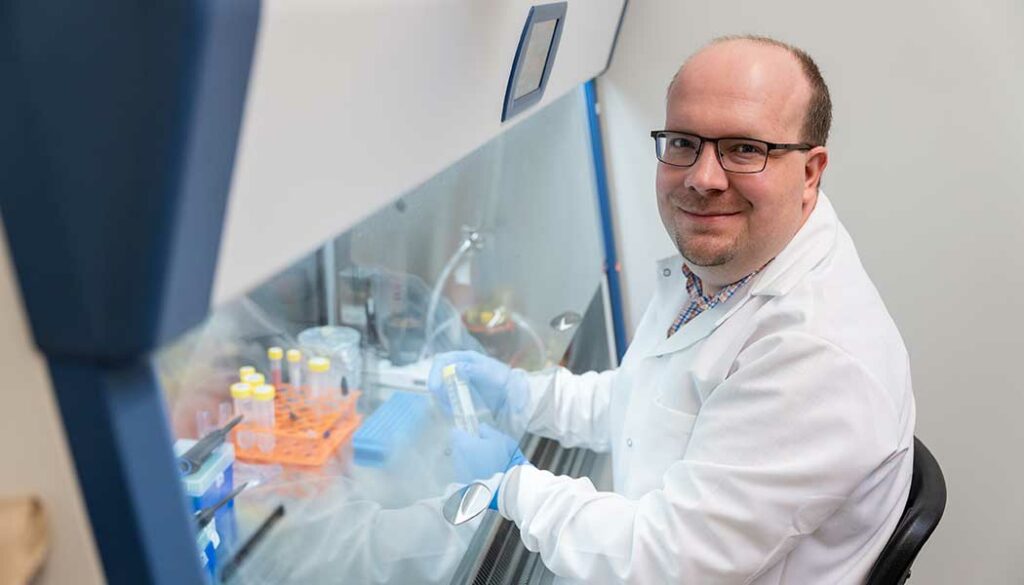
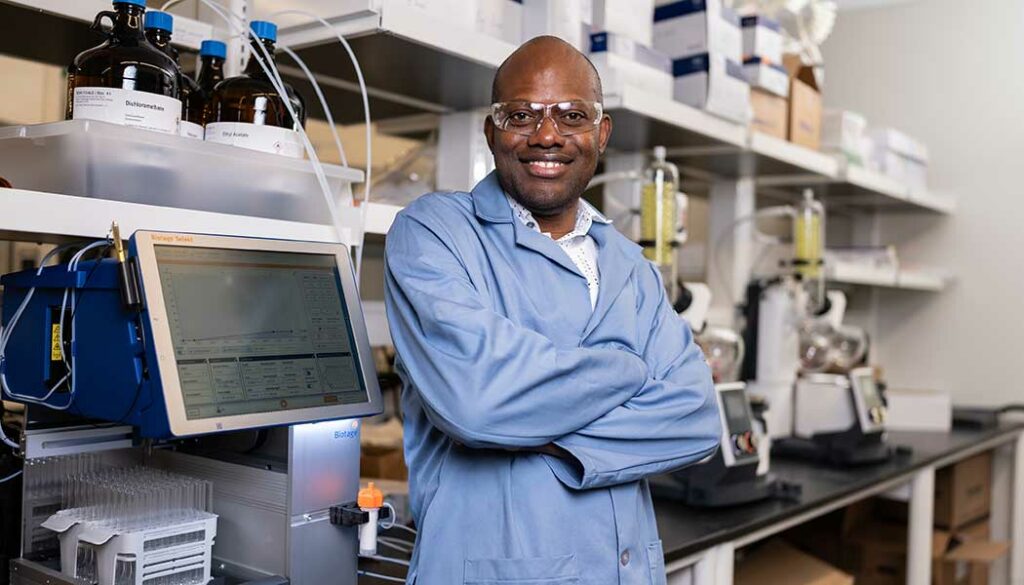
These high-tech laboratories even have career applications beyond curing cancer or solving Alzheimer’s disease. Luke Erber, who has been on campus since August, says his students, including undergraduates, are learning skills that can be applied in industry, such as proficiency with mass spectrometry in the preparation of medical devices. “It’s an incubator for asking questions and starting to find answers using this technology,” Erber says, “and I’m thrilled to have undergraduates. They ask great questions because they don’t have the same built-in assumptions that we have.”
Iredia Iyamu, motivated to a career in biological research in part by the malaria outbreaks that haunt his home country of Nigeria, says he was intrigued by the opportunity in Wolfe’s research group to join with others in solving massively complex problems.
“We are all experts in our different areas, and having someone who is an expert in other areas stretches my understanding,” Iyamu says. “I have found that the people here are collegial. We try to work together and help each other. Your colleagues here look forward to being able to help you advance your research, help you make progress, and that is why I would say there is reason for hope.
“There is reason for hope because there is progress.”
Calm the hysteria. Rather than a deadly wave, artificial intelligence, when properly deployed by actual intelligence, can instead become the rising tide that lifts all boats to safety and we oarsmen to long-lived health.
Research Rising’s all-star lineup
Along with “Big Data for Drug Discovery,” here are the other interdisciplinary projects awarded five-year, $3 million KU Endowment grants:
“Securing Our Worlds: Physical, Digital, Social” is an interdisciplinary effort to achieve safe and secure physical, digital and social environments. AT&T Distinguished Professor Perry Alexander, c’86, e’86, g’88, PhD’93, director of the Institute for Information Sciences, is principal investigator (PI).
“Growing KU’s Interdisciplinary Strengths in Genomics” is led by PIs Rob Unckless, associate professor of molecular biosciences and director of KU’s Center for Genomics, and Lena Hileman, professor of ecology & evolutionary biology. The effort hopes to unlock “secrets held in genomes” to examine how organisms fight disease and respond to climate change, and identify bioengineering approaches to aid health and sustainability.
“Advancing Intellectual and Developmental Research at KU” invests in genomics and data science to bolster KU’s international prominence in the field. The PI is Life Span Institute director John Colombo, professor of psychology, and he’ll be joined by psychology, special education, medicine and psychiatry colleagues.
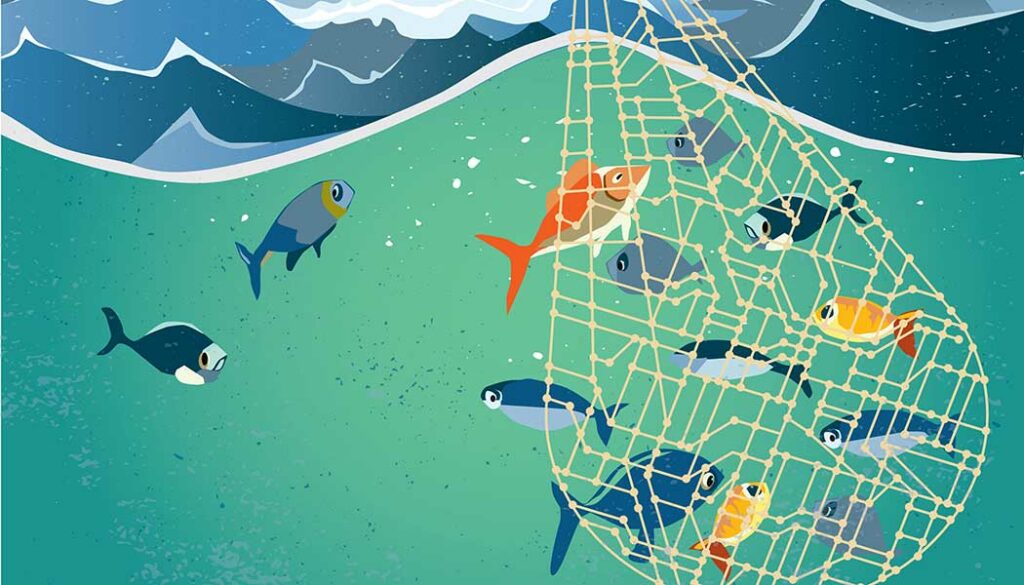
The Research Rising competition affirmed KU scholars’ commitment to discovery that changes lives, according to University leaders.
“We knew we would hear some inspiring ideas,” wrote Chancellor Doug Girod; Provost and Executive Vice Chancellor Barbara Bichelmeyer, j’82, c’86, g’88, PhD’92; and then-Vice Chancellor for Research Simon Atkinson. “But we couldn’t have imagined the level of creativity, ingenuity, strategic thinking, and care for our local and global communities that the proposals demonstrated.”
Chris Lazzarino, j’86, is associate editor of Kansas Alumni magazine.
Illustrations by Susan Younger
Photos by Steve Puppe
/
